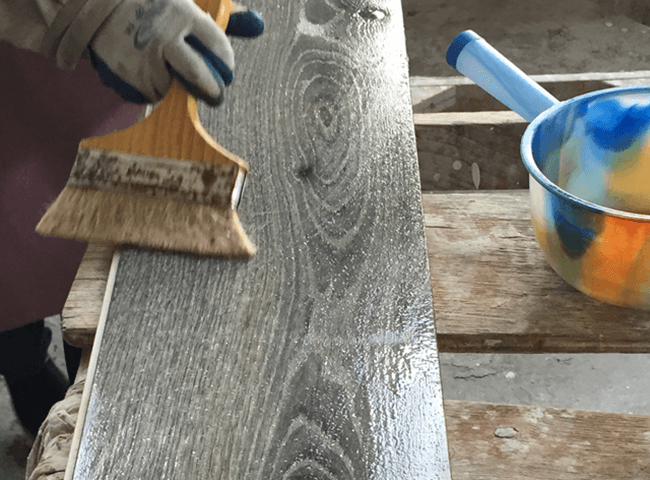An introduction to natural reactive colour processes

In recent years, people’s tastes in wood flooring have grown more and more sophisticated. Consumers and designers today often seek out the most natural-looking finishes possible, avoiding the traditional high-build, high-gloss floor finishes that once dominated the market. There has also been a trend away from colour uniformity, as the painted look of the traditional stained floor has lost popularity in favour of floors that show more natural variation. The desire is for colours that look as though they developed naturally, either as a creation of the forest or through natural aging and patina.
At Timeless Wood Floors we celebrate this movement toward ‘authenticity’ in the design aesthetic. As passionate wood people, we believe that wood’s natural beauty should be celebrated, not covered with heavily pigmented stains. We employ several different techniques to achieve more natural-looking colours: Fuming (aka Smoking), Carbonization, and Reactive Stain technologies. While traditional wood stains add colour by painting pigments on top of the wood, these techniques create colour from within the wood by causing reactions in its natural ingredients. The results are spectacular, but it’s important for consumers to understand and embrace these natural variations before they finalize their floor selection.
One consequence of these reactive colour processes is that unlike traditional stains, which cover over and therefore even out the natural variation in the wood, reactive processes can actually increase the natural variation. Because they rely on naturally-occurring compounds in the wood such as tannins and sugars, and the quantities of those compounds present in each board can vary, it’s possible to yield a wider range of colour than you had before you applied the reactive process. Also, reactive processes can make the colour more photosensitive than it would be naturally. For example, fumed (smoked) European Oak has a tendency to fade a bit with exposure to UV light, like Walnut, a species with similar colouration. Other reactive processes, like certain reactive stains, may darken with exposure to light, similar to many exotic species.”
Learn more about these individual techniques:


